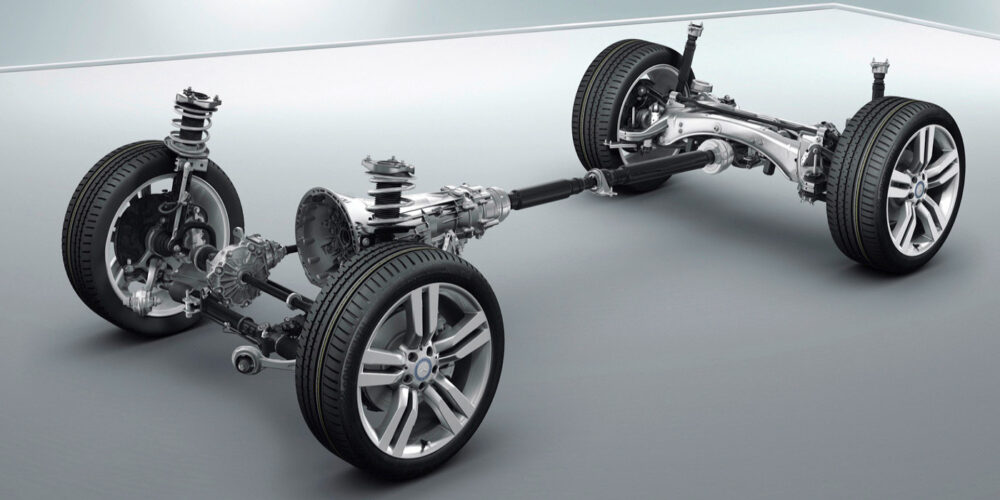By Larry Carley
The lubricants that are used in manual transmissions, transaxles, differentials and transfer cases include a variety of different oils. Many transmissions, transaxles and transfer cases use gear oil with viscosities ranging from 75W-90 up to 85W-140. Others use ATF (Dexron II/III, Mercon V, etc.) or even motor oil (10W-30 or 10W-40). Most differentials, by comparison, use hypoid gear oils that also contain extra amounts of “extreme pressure” (EP) additives. Limited slip differentials also require their own special additives.
Most of these lubricants are long-lived and hold up well for tens of thousands of miles. But none will last forever. The combination of heat, shearing action and oxidation eventually breaks down the oil and reduces its ability to lubricate and protect.
Normal wear inside the gearbox and differential also produces metallic debris that ends up in the oil. Since there’s no filter to remove these contaminants, the fluid becomes more and more abrasive as the miles add up. The only way to get rid of the contaminants and restore the lubricating qualities of the oil is to drain and replace the fluid. The question is when.
Many vehicle manufacturers do not publish a recommended service interval for manual transmissions, transaxles, transfer cases or differentials, but some do. Chrysler, for example, says the transmission and transfer case on 1999 Jeep Cherokees should be drained and refilled every 30,000 miles or 24 months. Other manufacturers, though, say only to inspect the fluid level periodically and add as needed to maintain the proper level.
As many technicians know, the oil level inside most rear-wheel-drive transmissions, transfer cases and differentials is often low because nobody ever checks it unless there’s an obvious leak – and even then it might not be checked.
One reason why the oil level is seldom checked is because the oil filler plugs on most rear-wheel-drive transmissions and differentials can only be reached by raising the vehicle or crawling under it. The same goes for the filler plug on 4×4 transfer cases. It takes extra effort to check these fluid levels so few people do it. As a result, many transmissions, transfer cases and differentials fail long before they should because of loss of lubrication, oil break-down or contamination.
The oil level inside a transmission or differential is critical for proper lubrication because there’s no oil pump to route the oil where it’s needed. The oil is churned by the whirling gears, which “splash lubricates” the moving parts.
If the fluid level gets too low because of a leak, therefore, the bearings and gears won’t get enough lubrication. The result can be galling, seizure and total destruction of the unit. Oil is also necessary to cool gears and bearings. The total oil capacity of most manual transmissions, differentials and transfer cases isn’t very much (typically a couple of quarts or less), so it doesn’t take much fluid loss before parts start running dangerously hot.
If a transmission or differential is whining and making noise, it’s too late to add oil. The damage has already been done. Adding a higher viscosity oil may quiet it for awhile, but once wear has taken its toll on the gears and bearings, there’s no magic cure other than to overhaul the unit and replace the worn parts.
Another reason for changing the lubricant inside a manual transmission, transaxle, transfer case or differential is to improve cold-weather operation.
Most conventional oils thicken as the temperature drops. This increases friction, drag, fuel consumption and the effort needed to shift gears. During subzero weather, a heavy gear oil inside a manual transmission can make the shifter feel stiff and clunky. The gears may even grind when changing gears until the vehicle warms up. The cure here is to replace the conventional gear oil with a synthetic gear oil.
Synthetic gear oils have a lot of advantages compared to conventional petroleum-based oils. Synthetics are more stable, flow more easily at low temperatures, reduce friction and operating temperatures, improve fuel economy and generally provide superior all-round lubrication and protection under a wide range of operating conditions. But they are also more expensive.
CHOOSING THE “RIGHT” LUBE
When adding or changing gear oil, always use a lubricant that meets the specifications of the vehicle manufacturer.
Using the wrong type of lubricant may cause shift problems and even premature failure. For most passenger cars and light trucks, a “universal” gear oil with a viscosity of 75W-90 or 80W-90 that meets American Petroleum Institute (API) “GL-4” service ratings is usually acceptable for use in most manual transmissions that require gear oil rather than ATF or motor oil.
For most passenger car and light truck differentials, use a 75W-90, 80W-90 or 85W-140 gear oil that meets API “GL-5” specifications.
Some oil suppliers warn that gear oils formulated to meet GL-5 specifications should not be used in manual transmissions because the higher levels of extreme pressure additives can be corrosive to brass and bronze synchronizers.
According to suppliers, using a GL-5 gear oil in a synchromesh transmission that requires GL-4 gear oil can shorten the life of the synchronizers by half! So always use a lubricant that meets OEM requirements.
The makers of some synthetic lubricants say their gear oils exceed both GL-4 and GL-5 performance requirements and can be safely used in transmissions without harming the synchronizers. Some also say they have synthetic gear oils that can be substituted for ATF or motor oil in gear boxes that require these type of lubricants.
Though most manual transmissions specify a GL-4 gear oil, some require a GL-3 or GL-1 gear oil. GL-3 contains a lesser amount of EP additive and is used primarily in import vehicle transmissions and transaxles. GL-1 is straight mineral oil that contains no EP additive and is applicable for light-duty transmissions only.













